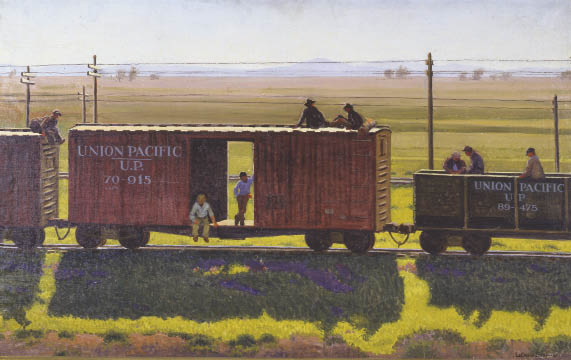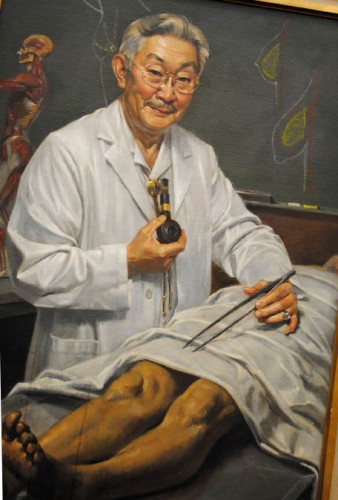
LeConte Stewart followed by Alvin Gittins established a legacy of artistic excellence in Utah that continues today.
LeConte Stewart’s Legacy
How one prolific painter from Glenwood, Utah, began a 80-year tradition for exceptional art training at the University of Utah.
Born in Glenwood, Utah, in 1891, LeConte Stewart attended Ricks Academy (currently BYU-Idaho) where, as art editor for the Student Rays, he came across an ad for summer school at the Art Students League in New York which he attended and there studied with some of the best artists on the East Coast.
Stewart returned to the grand western desert he loved the following spring and took a teaching position in Kaysville, Utah. Frustrated that there was no art program in the school at that time, he started teaching art on his lunch hour, as well as conducting monthly classes for elementary teachers. He developed a nurturing teaching style, saying:
“Nothing encourages the student as much as the feeling that s/he is working successfully.” He remembered fondly one of his art teachers that wasted little time on criticism, “He merely said with a fair amount of cheerful sincerity, ‘You’ve got things. This time is better than the last.’”
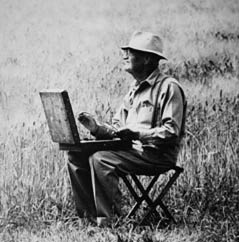
Stewart was enamored with Utah’s scenery and natural rugged landscapes. He often slipped a piece of sagebrush in his pocket in order to carry a piece of the desert with him. In his long life he produced 7,000 works through the mediums of oil, watercolor, print, and drawing. He was a master of lighting with an ability to capture the mood of the day through depicting light and a sense of atmosphere. He painted with his soul.
“Painting is more than expressing the appearance of things; it is expressing the spirit of things. When you know and love a tree, you can paint its spirit, the quality God gave it.”
In 1938, Stewart was appointed Chairman of the Art Department, a position he held for 18 years. His teaching style and passion launched the careers of many of his students, and many Utah painters regard him as the father of the tradition of Western Americana painting in Utah.
LeConte Stewart met Alvin Gittins when Gittins was teaching figure drawing at BYU. He saw the incredible talent of Gittins and offered him a position to come a teach at the University of Utah, in 1947. Stewart then offered Gittins the position as Chairman of the Art Department in 1956.
Alvin Gittins: A Style All his Own
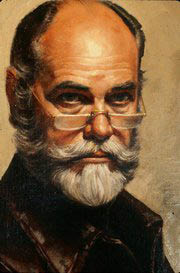
Alvin Gittins (1922-1981), an Englishman from Kidderminster, Worcester, England immigrated to Utah to attend Brigham Young University as an exchange student from the Central School of Art in London. A colleague of Stewart’s, Gittins taught in the Department of Art and Art History at the University of Utah from 1947 to 1981. He was appointed chairman following Stewart in 1956 and served in that position until 1962, establishing the department’s reputation as being one of the best undergraduate programs in the country. A phenomenal portraitist, Gittins was also appointed the artist-in-residence. His work includes portraits of administrators and professors of the University of Utah that hang in buildings across campus.
As a teacher Gittins felt it necessary for his students to study human anatomy and figure drawing. He sought unusual body types for his class models so his students would learn to capture the true essence of a person and not a stereotype. Gittins often used students’ work to illustrate his point, randomly selecting a drawing or painting and facing it toward the class to ask his students to point out anatomical mistakes. One of his teaching philosophies was to express to his students to “go beyond pretty rendering” in their search for something authentic. This seemed to be an active life philosophy as well. His admirers often described him as a greater man than an artist.
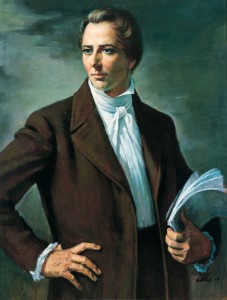
Gittins served an LDS Mission and attended BYU to receive his Master’s Degree. Gittin’s was not an active member later in life and was infamous for smoking in the classroom even after the Utah indoor Clean air act was passed.
Randall Lake on Gittins
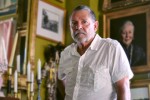
Randall Lake Discusses the greatness of his “most influential teacher” Alvin Gittins, who he says was a tyrant who broke down students so he could “re-build them as great artists.”
Randall Lake recounts that when he began his MFA under Gittins he was disheartened by the brutal criticism he received, “ He told me I was too old and too stiff to make it.” But Lake says that Gittins was intentionally brutal because he couldn’t mold and shape his students if they believed they knew anything about art.
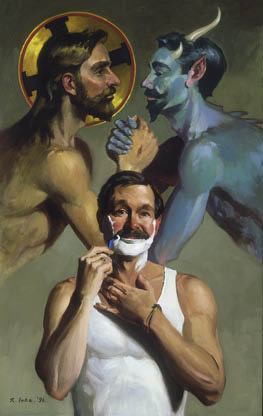
Randall Lake has spent 25 years of his career as a very successful portrait painter. After Gittin’s passed away Lake eventually became the next go-to-guy for portraits of famous people. He painted Mayor Ted Wilson, Utah Governor Scott Matheson, many of the Eccles family.
Before Lake studied under Gittins he studied to become an artist in Paris for three years. Lake then returned to Utah to pursue his MFA under Gittins. He says he learned far more from Gittins then he did in Paris’ Art Academy. “I have [Gittins] to than for my livelihood and career in art.”
He would always tell you if your painting had problems?
Oh yea he was famous for it. You could hear him go around the room and say things like, “Stephen this is excellent, by mistake I’m sure.” He was famous for being able to rip people to pieces, which he did regularly.
So if there was a student who had absolutely no ability or talent he would just come right out?
Oh yea watch out, yea he did tell them. He was the only one who really did. Because I’m sure it affected the expense of the art department, they kept loosing students, but he was one to say, “ now look you ought to find a different profession.” So he was very forthright.
What did he say about your work?
He said, “you are old and you are stiff and you just don’t have it.”
But you are now recognized as one of the best painters in Utah?
But that is the way Alvin was he said, “you must judge my affection for you in terms of criticism.”
In terms of how much he would criticize you?
That’s right, that’s how he thought he would get the very best. And he would kind of have a system. And I studied with him for four years so I kind of learned. If anybody came into the class who thought he had any ability he would tare him down so he could teach him. Because you can’t teach somebody who thinks they know something. So he would pretty much destroy all of us and build us from the ground up.
And did you see that work?
Yea. It sure did. He described it as, “getting raw wood and making furniture.” He would mold us and make us into students who might possibly make a living at it. Which he was very realistic about it. He would say, “its a glorious profession, but you’ll starve.”
Would a lot of students drop out who even you thought had some ability?
Most of us were really dedicated and we wouldn’t drop out, we would just work harder. The trouble is he taught in the University system so a lot of the students he had had to take it, not because they wanted to, they just wanted to graduate…So he had to deal with people who weren’t really interested in what he had to teach, and that drove him crazy, you know with the people who were just trying to get a grade.

